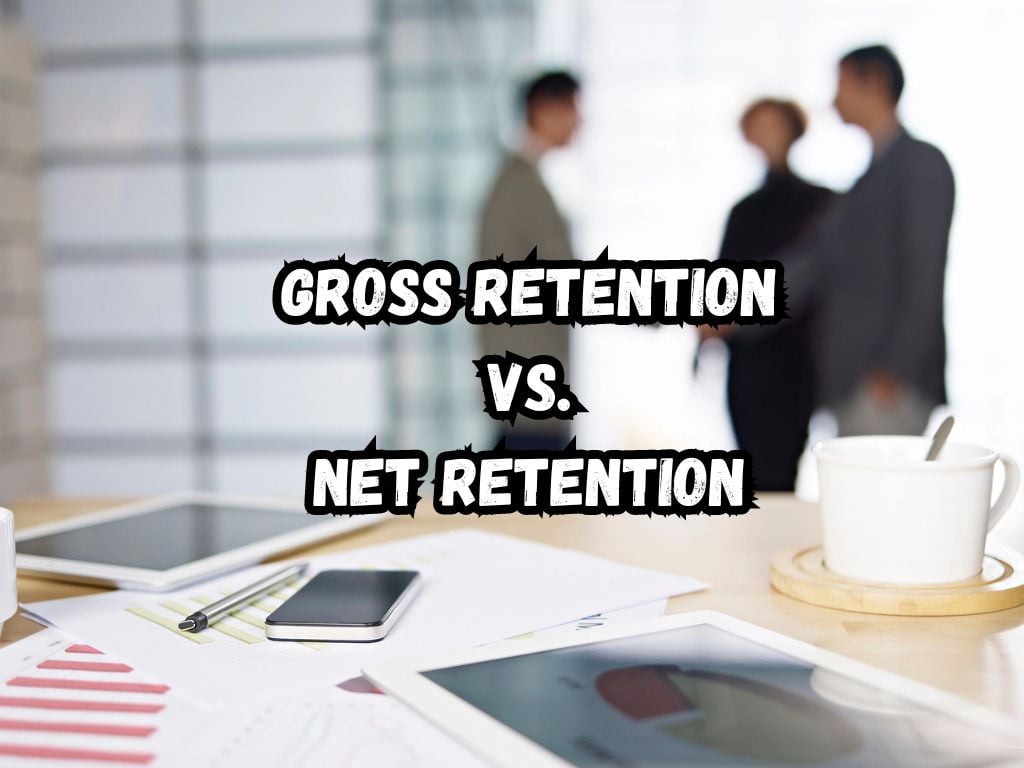Customer retention is the lifeblood of a successful business. When customers keep coming back, it’s a clear sign that a business is doing something right. But how do you measure customer loyalty?
Enter gross retention vs net retention. These key metrics provide insights into how well a business retains its customer base and generates revenue from existing customers.
Understanding Customer Retention
The concept of customer retention is straightforward: it’s about keeping your customers and incentivizing them to continue doing business with you. To maximize profitability, businesses need to measure and improve customer retention.
Different retention measures can reveal different aspects of a business. The key is to understand these measurements and utilize them in a way that best fits the business strategy. That’s where Gross Retention and Net Retention come in.
Gross Retention
Definition and Calculation
Gross Retention Rate (GRR) measures the revenue a company retains from existing customers, excluding revenue from upselling or expanding services. In effect, it shows the stability of your customer base.
It’s calculated with the following formula: the monthly recurring revenue (MRR) at the end of a period, divided by the MRR at the beginning of the period, times 100%.
Importance of Gross Retention
GRR reflects how successful a business has been in making customers stick around. Keeping existing customers can be more cost-effective than acquiring new ones.
A robust GRR indicates high customer satisfaction and brand loyalty, which are indeed the golden keys to sustainable growth and profitability.
Limitations
However, Gross Retention has its limitations. It doesn’t take into account new sales or upsells to existing customers. For a company with a vibrant upsell strategy or high expansion revenue, the GRR could provide an incomplete, possibly even misleading, picture.

Net Retention
Definition and Calculation
In contrast to GRR, Net Retention Rate (NRR) captures not just retained revenue, but also any additional revenue from upselling, cross-selling, or price increases.
The formula for NRR is: (MRR at the end of a period – expansion MRR) divided by (MRR at the beginning of the period), times 100%.
Importance of Net Retention
NRR provides a comprehensive view of the relationship between a business and its customers. It reveals revenue growth within the existing customer base, giving businesses critical insights to strategize for increased customer spending. It’s a useful metric for businesses looking to optimize their growth.
Limitations
However, like GRR, Net Retention isn’t without its flaws. A high NRR can mask the problem of customer churn.
If the company is adding new customers rapidly but also losing them at a significant rate, it might not be instantly visible when looking solely at Net Retention.
Gross Retention vs Net Retention: A Comparative Overview
Key Differences
A central difference between Gross and Net Retention is their approach. Gross Retention focuses on how much baseline revenue is retained from existing customers, while Net Retention captures the total value of a customer relationship, including revenue from upsells and cross-sells.
When to Use Which Metric
There’s no one-size-fits-all choice between Gross and Net Retention. Depending on your business type, growth phase, and strategic goals, one may be more appropriate than the other at a given time.
Integrating Retention Metrics into Business Strategies
Actionable Insights from Each Metric
Both Gross and Net Retention metrics can guide businesses in formulating strategies. A dip in Gross Retention might necessitate a reevaluation of customer service or product offerings.
On the other hand, a stagnant Net Retention could signal a need to shake up upselling and cross-selling strategies.
Pro Tips for Monitoring and Improving Retention
It’s recommended to keep a close eye on both metrics to chart your business’s health. Techniques include customer feedback, improved service, or revised sales approach to enhance both types of retention rates.

Frequently Asked Questions
What is a good Gross Retention Rate?
Factors such as industry, business size, and product type will determine a good Gross Retention Rate. In general, businesses aim for a GRR of 85% or higher.
How can a business improve its Net Retention?
A business can improve its Net Retention by focusing on upselling and cross-selling to existing customers, provided the quality of service stays consistent.
Can a business have a high Net Retention and still be failing?
Yes, a high Net Retention Rate can mask customer churn problems. A business with high NRR should still monitor other metrics for a balanced view.
How often should Gross and Net Retention Rates be calculated?
The frequency can vary, but most businesses calculate retention rates at least quarterly.
Are there industry standards for these retention rates?
There can be significant differences based on industries. Software-as-a-Service (SaaS) companies, for instance, would aim for different rates than retail businesses.
Conclusion
Understanding the nuances of Gross Retention vs. Net Retention can underpin successful business strategies. Each metric offers valuable, though different, insights into customer behavior.
By leveraging these insights to your advantage, you can build a loyal customer base and drive your business toward sustainable profitability.
Assessing and applying the most relevant metric according to your business scenario is, therefore, a practical and necessary task.


 Tags:
Tags:










